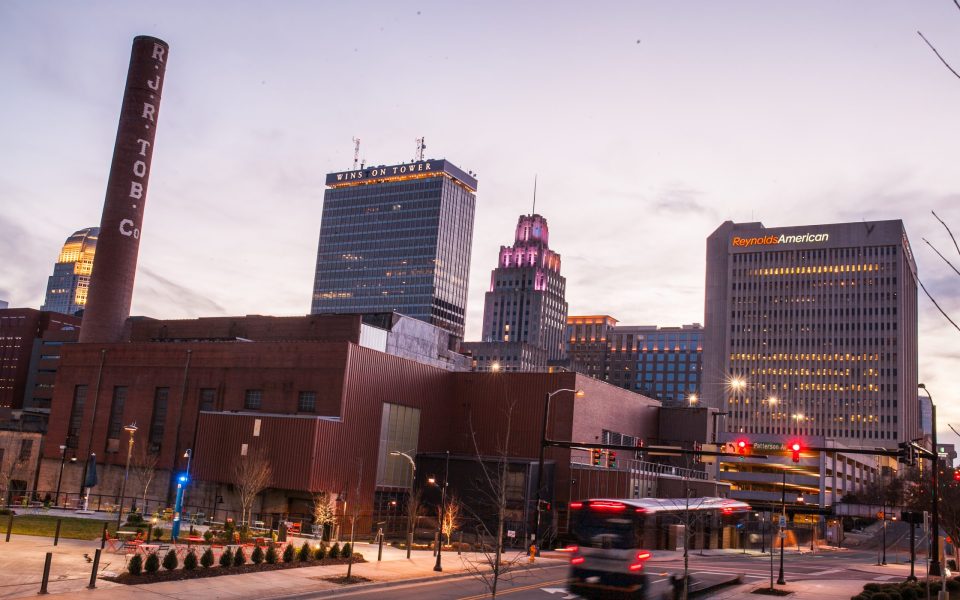The lights are on again at Reynolds Tower, strong spots marking the outlines and crenellations that bring to life what had been the blackened tooth of the nighttime skyline. It’s good to have her back. It means something to the city, something spiritual, and it’s a living reminder of how the whole thing got started.
Sometimes locals call Winston-Salem a “small town with skyscrapers.” There’s something to it.
From the rarified air of the Piedmont Club, on the 19th floor of the glossy BB&T Building in downtown Winston-Salem, the whole city looks like a brief interruption from the trees.
On the north and west sides the canopy begins at the end of the concrete border just a few blocks away and extends to the horizon, where a suggestion of mountains breaks the plane.
From up here the city is all rooftops and parking lots, with clipped glimpses of street life in between. The only things that make sense are the other tall buildings that share this heightened existence. Like giraffes among zebras, they alone regard each other at eye level.
Just to the northeast, the old Reynolds Building hides her faded beauty behind her taller and shinier offspring, the Winston Tower, which came along 40 years after the grande dame was built, the front edge of an age of glass and steel. Together they comprise almost half of Winston-Salem’s distinct skyline, anchoring the balance between the old and the new.



![The Wells Fargo Center began life as the third Wachovia Building in downtown Winston-Salem. It’s the tallest building in the Triad, and one of the most architecturally significant. [PHOTO BY CALEB SMALLWOOD]](https://i0.wp.com/sam.beat-media.com/wp-content/uploads/imported-files/1.31.2016.tcb_14.jpg?resize=667%2C446&ssl=1)
Join the First Amendment Society, a membership that goes directly to funding TCB‘s newsroom.
We believe that reporting can save the world.
The TCB First Amendment Society recognizes the vital role of a free, unfettered press with a bundling of local experiences designed to build community, and unique engagements with our newsroom that will help you understand, and shape, local journalism’s critical role in uplifting the people in our cities.
All revenue goes directly into the newsroom as reporters’ salaries and freelance commissions.


Great piece but it would have been nice to reference Integon Insurance as the company who built the GMAC Tower. They were later purchased by GM and turned into GMAC Insurance. I still call it the Integon tower and I’m sure other locals might as well.
Great long read on Winston’s skyscrapers. It was appreciate the fact that you focused some attention on the Winston Tower and the GMAC building. Two buildings that often get overshadowed by the iconic RJR building and the more modern BB&T building and Wells Fargo building. I look forward to rereading this story and taking some notes. I would recommend folks in Winston read this article and then taking a long walk through downtown Winston and absorb the history of Winston’s skyline. The skyline has a story to tell.
Thanks, Watchman!
The first thing many people see when they spy the Wells Fargo/Wachovia tower is….